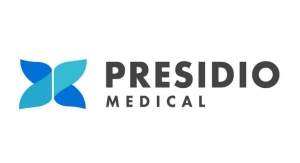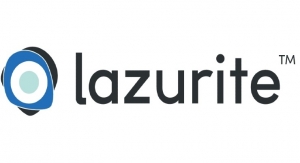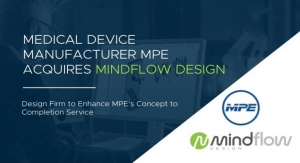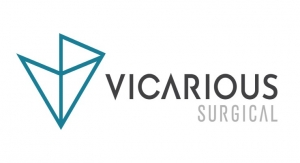Steve Maylish, Chief Commercial Officer, Fusion Biotec, and Ben Bobo, CEO, NeuroTemp LLC06.06.17
Commercialization is the confluence of all prior activities, a time of high investment and high anxiety. Here the rubber meets the road—yet for a new device, visibility on that road is often quite poor. A regulatory agency approved your device for sale, but how do you get traction? If you build it (to meet your pricing target), will they come?
Although established medical device companies have a more predictable path, product commercialization brings risk and uncertainty. Go-to market strategies often resemble a slog in the fog rather than a well-executed plan. Companies pull familiar levers of market research, product design, and clinical trials. Marketing applies the leverage of key opinion leaders (KOLs), Centers of Excellence (COE), peer-reviewed journals, clinical partners, and voice of the customer to maximize the offering’s impact and drive commercial certainty up and down corporate structure. However, according to a survey of 2,240 executives from McKinsey Global, only 39 percent feel confident in their company’s ability to commercialize a medical device. Commercialization is truly an art form; no one product, market, or customer acts predictably to the traditional commercial levers.
In reality, no one can predict whether a product will be successful and become standard of care. The unreasonable pressure executives endure to deliver a revenue- producing product under budget and under schedule adds to this dynamic. Most of the mistakes that cost investors millions, significantly dilute key shareholders, hurt stock prices, and run startups out of business are made here. Commercialization is the culmination of a dream to deliver a disruptive and breakthrough medical device, but innovators, inventors, and engineers can fail to adequately filter ideas and designs through the most important element—the customer. Teams can fall victim to “drinking their own Kool-Aid” or to the pressure of executing the plan and miss the basics of product development.
Presuming market research identified a unique clinical problem to solve with large market potential and a disruptive design approach, the Customer Requirements Document (CRD) is the greatest determinant of a successful commercial launch. The CRD provides specifications of what the customer wants the product to do in a clinical environment, based on their understanding of the technology. The Product Requirements Document (PRD) provides all the engineering requirements for what the product should do.
When the CRD and PRD are misaligned, the product may not achieve commercial liftoff. The initial CRD and PRD provide a line in the sand to start development. However, these are living documents that evolve during the development process—expect them to evolve as KOLs interact with the device and provide feedback. Too often, this feedback occurs late in the process. This should change because of the new U.S. Food and Drug Administration (FDA) usability requirements. (Some of these new requirements are outlined in my article entitled “The Human Factor” in the May issue of MPO.)
These evolving product features and iterations will, however, be in direct conflict with budgets, timelines, and expectations of executives and investors. The process can be cut short as undue pressure is applied; the product has a higher chance of failing in the clinical setting in these cases. An experienced R&D leader should provide a buffer between the development and executive teams. Investors will espouse—and project leaders will confirm—that projects usually take twice as long and cost twice as much as initially expected. This reality is often based on tasks unknown during budgeting and the discovery process of development. Project plans show milestones and a waterfall process, but feedback and iteration underlie the entire process.
No one is prepared when a product misses its clinical mark during clinical studies. The design can be prototyped and tested, but the team can still fail to appreciate the impact of environmental factors on their design, customer requirements, or the technology’s failure to deliver on its promise. Since iterating the design at the end of development is expensive and time consuming, many assume clinical problems will be solved with enough training and education.
One company developed a novel non-invasive monitoring technology and spent six years and over $12 million on a design unsuitable for the ICU environment and an accuracy that would never be clinically acceptable. Had the company invested in early prototypes with leading neurosurgeons and nurses, their understanding of the customer requirements and target the design needed to hit would have been dramatically different. This is the innovator’s dilemma: not listening to the customer/user throughout the process.
Throughout the product development process, “commercialization” activities happen in parallel. These can be as varied as human factors, design for manufacturing, or clinical testing. The main factor in determining the market for a new device is identifying an unmet clinical need for a procedure, or a step in a procedure. Some companies are formed by an idea looking for an application. It’s far better to start with an unmet clinical need.
For example, one company pioneered beating heart surgery. The unmet clinical need in this case was preventing patients from undergoing open-heart surgery on a heart/lung machine and avoiding the deleterious effects of cardiopulmonary bypass. The result: the company took 20 percent of the coronary artery bypass market and was sold for $313 million.
There is a huge difference between how a large established medical device (LEMD) company and a start-up launches a product. A LEMD has established sales channels (40- to 200-person sales forces), KOLs, and an established brand name for product quality. They also have established national accounts that can be leveraged to promote the product into leading centers. Even with these built-in advantages, LEMDs still take a conservative approach to product introductions to customers.
Typically, they identify thought leader sales representatives (TLRs) in their organizations that influence the sales teams. They target COEs in territories of TLRs to initiate the product launch with the purpose of developing sales messaging and “recipes for success.” Twenty to twenty five centers may be targeted in this phase to flesh out the price, promotion, and positioning of the product in the customer’s mind. Usually four to six months afterward, they will do a market release with the full sales organization. The TLRs will be active in this phase to lend credibility and gravitas to the product launch.
Startups have a different challenge. They lack a brand name, national accounts, a distribution channel of sales pros with KOLs, and sometimes funding. A startup has two distinct options to develop its sales channel. First is a direct sales force, which brings the advantage of controlling the sales strategy. Going direct is expensive and adds dramatically to the burn rate. This can materially impact the company’s operations if the product is not ready for launch. Most startups do not have the luxury to add an eight- to 10-person sales team. Experienced, successful sales reps are highly paid, but inexperience doesn’t get you through the door.
Identifying and training independent distributor sales reps to sell and promote the product is another option. However, the decision to use distributor reps should not be made for purely financial reasons. If the distributor reps also promote products with shorter sales cycles and minimal levels of approval, the startup can lose control of their strategy. It’s easy to feel abandoned; distributors typically have multiple products in their bag.
Startup medical device companies passionately usher in new technology while facing the challenges of funding, development, and regulatory agencies in order to change the market and bring life-saving technology to patients in need. It may have taken at least 24 grueling months to get to product launch, but the distributor doesn’t have skin in the game and is often fixated on products driving short sales cycles and quick payment.
When considering a distributor strategy, consider the sales cycle of your product and ensure you identify distributors comfortable working a six- to nine-month process. If your product isn’t ready for commercial release, distributors will focus on products creating a path to commissions.
At this point, hindsight is 20/20. The distributors have given the ultimate gift of feedback—because in commercial terms, one only gets a couple of bites at the apple to make an impression in the marketplace. It’s hard to make a second impression (and recover with subsequent launches) if the product rollout looks half-baked, with a technology faltering out of the gate. Unfortunately, modifying a design can also mean resubmitting to the FDA.
As sales falter, inventory grows. This ties up cash. Investing too much in inventory or factory automation before product launch increases company risk, even if it reduces unit cost. Additionally, as sales increase, manufacturing is strained. This problem is solvable—scaling manufacturing should be carefully timed with the product rollout. Manual manufacturing processes can provide flexibility during commercialization, but there should also be a quick and clear path to ramp when needed.
Once the essentials are covered, the company must consider the estimated usage per institution. This bottom-up approach provides a more accurate sales forecast. When converting an institution, understand the competition and any existing group purchasing organization (GPO) contracts needing circumvention.
GPOs and integrated delivery networks (IDN, a system of providers) control much of the decision-making for capital equipment. A healthy GPO and IDN strategy must exist. According to Definitive Healthcare, 97 percent of hospitals are affiliated with GPOs. The Healthcare Supply Chain Association also suggests GPOs manage about 72 percent of the purchases in hospitals.
U.S. health data based on the U.S. Centers for Medicare and Medicaid Services found from 2013 to 2022, GPOs are expected to generate savings of up to $864 billion for the U.S. health system and their members. GPOs like Premier and Vizient together supply close to 1 million hospital beds. Vizient alone represents almost $100 billion in annual purchasing volume, but don’t assume members are loyal to a corporate contract. More than ever, cost containment and patient outcome data is crucial to survival.
Almost 80 percent of institutional C-Suite executives have resource utilization programs in place to control the use of supplies and services. Value analysis committees delay the introduction of new products because each potential entrant must be vetted. Companies need to articulate the product’s measurable value, then prove it. If not, new devices will be commoditized (resulting in a lower price) or never purchased. They also have to be creative—for example, through an equipment lease, pay-per-use agreement, or risk-based contracts. Companies also need to know which contracting approaches provide institutional customers the most value.
Obsess over customer feedback during the development phase and embrace negative input. If treated and handled correctly, each negative pearl is worth millions in valuation potential. Throughout the development process, keep an open mind, engage the customer often, and be willing to make changes. Solving a unique clinical problem in close coordination with the customer often results in a disruptive design approach. Hiring the right sales team to sell the right product is the only way to clear some fog on the road ahead. Once this is done, don’t underestimate the value of a comprehensive sales strategy. Commercialization will always be a time of high anxiety, but there’s no quicker road to success than taking the time to do it right.
Steve Maylish has been part of the medical device community for more than 30 years. He is currently chief commercial officer for Fusion Biotec, an Irvine, Calif.-based contract engineering firm that brings together art, science, and engineering to create medical devices. Early in his career, Maylish held positions at Fortune 100 corporations such as Johnson & Johnson, Shiley, Sorin Group, Baxter Healthcare, and Edwards Lifesciences.
Ben Bobo is a senior medical device/healthcare technology executive with experience as a CEO, CCO, and COO. His background includes extensive sales and marketing successes in VC-funded start-up, early commercial stage, and multibillion-dollar corporate environments. Bobo has held positions with Edwards Lifesciences, Cardio Thoracic Systems, Guidant, and CardioVention. He has a BS in economics and an MBA from the University of Phoenix.
Although established medical device companies have a more predictable path, product commercialization brings risk and uncertainty. Go-to market strategies often resemble a slog in the fog rather than a well-executed plan. Companies pull familiar levers of market research, product design, and clinical trials. Marketing applies the leverage of key opinion leaders (KOLs), Centers of Excellence (COE), peer-reviewed journals, clinical partners, and voice of the customer to maximize the offering’s impact and drive commercial certainty up and down corporate structure. However, according to a survey of 2,240 executives from McKinsey Global, only 39 percent feel confident in their company’s ability to commercialize a medical device. Commercialization is truly an art form; no one product, market, or customer acts predictably to the traditional commercial levers.
In reality, no one can predict whether a product will be successful and become standard of care. The unreasonable pressure executives endure to deliver a revenue- producing product under budget and under schedule adds to this dynamic. Most of the mistakes that cost investors millions, significantly dilute key shareholders, hurt stock prices, and run startups out of business are made here. Commercialization is the culmination of a dream to deliver a disruptive and breakthrough medical device, but innovators, inventors, and engineers can fail to adequately filter ideas and designs through the most important element—the customer. Teams can fall victim to “drinking their own Kool-Aid” or to the pressure of executing the plan and miss the basics of product development.
Presuming market research identified a unique clinical problem to solve with large market potential and a disruptive design approach, the Customer Requirements Document (CRD) is the greatest determinant of a successful commercial launch. The CRD provides specifications of what the customer wants the product to do in a clinical environment, based on their understanding of the technology. The Product Requirements Document (PRD) provides all the engineering requirements for what the product should do.
When the CRD and PRD are misaligned, the product may not achieve commercial liftoff. The initial CRD and PRD provide a line in the sand to start development. However, these are living documents that evolve during the development process—expect them to evolve as KOLs interact with the device and provide feedback. Too often, this feedback occurs late in the process. This should change because of the new U.S. Food and Drug Administration (FDA) usability requirements. (Some of these new requirements are outlined in my article entitled “The Human Factor” in the May issue of MPO.)
These evolving product features and iterations will, however, be in direct conflict with budgets, timelines, and expectations of executives and investors. The process can be cut short as undue pressure is applied; the product has a higher chance of failing in the clinical setting in these cases. An experienced R&D leader should provide a buffer between the development and executive teams. Investors will espouse—and project leaders will confirm—that projects usually take twice as long and cost twice as much as initially expected. This reality is often based on tasks unknown during budgeting and the discovery process of development. Project plans show milestones and a waterfall process, but feedback and iteration underlie the entire process.
No one is prepared when a product misses its clinical mark during clinical studies. The design can be prototyped and tested, but the team can still fail to appreciate the impact of environmental factors on their design, customer requirements, or the technology’s failure to deliver on its promise. Since iterating the design at the end of development is expensive and time consuming, many assume clinical problems will be solved with enough training and education.
One company developed a novel non-invasive monitoring technology and spent six years and over $12 million on a design unsuitable for the ICU environment and an accuracy that would never be clinically acceptable. Had the company invested in early prototypes with leading neurosurgeons and nurses, their understanding of the customer requirements and target the design needed to hit would have been dramatically different. This is the innovator’s dilemma: not listening to the customer/user throughout the process.
Throughout the product development process, “commercialization” activities happen in parallel. These can be as varied as human factors, design for manufacturing, or clinical testing. The main factor in determining the market for a new device is identifying an unmet clinical need for a procedure, or a step in a procedure. Some companies are formed by an idea looking for an application. It’s far better to start with an unmet clinical need.
For example, one company pioneered beating heart surgery. The unmet clinical need in this case was preventing patients from undergoing open-heart surgery on a heart/lung machine and avoiding the deleterious effects of cardiopulmonary bypass. The result: the company took 20 percent of the coronary artery bypass market and was sold for $313 million.
There is a huge difference between how a large established medical device (LEMD) company and a start-up launches a product. A LEMD has established sales channels (40- to 200-person sales forces), KOLs, and an established brand name for product quality. They also have established national accounts that can be leveraged to promote the product into leading centers. Even with these built-in advantages, LEMDs still take a conservative approach to product introductions to customers.
Typically, they identify thought leader sales representatives (TLRs) in their organizations that influence the sales teams. They target COEs in territories of TLRs to initiate the product launch with the purpose of developing sales messaging and “recipes for success.” Twenty to twenty five centers may be targeted in this phase to flesh out the price, promotion, and positioning of the product in the customer’s mind. Usually four to six months afterward, they will do a market release with the full sales organization. The TLRs will be active in this phase to lend credibility and gravitas to the product launch.
Startups have a different challenge. They lack a brand name, national accounts, a distribution channel of sales pros with KOLs, and sometimes funding. A startup has two distinct options to develop its sales channel. First is a direct sales force, which brings the advantage of controlling the sales strategy. Going direct is expensive and adds dramatically to the burn rate. This can materially impact the company’s operations if the product is not ready for launch. Most startups do not have the luxury to add an eight- to 10-person sales team. Experienced, successful sales reps are highly paid, but inexperience doesn’t get you through the door.
Identifying and training independent distributor sales reps to sell and promote the product is another option. However, the decision to use distributor reps should not be made for purely financial reasons. If the distributor reps also promote products with shorter sales cycles and minimal levels of approval, the startup can lose control of their strategy. It’s easy to feel abandoned; distributors typically have multiple products in their bag.
Startup medical device companies passionately usher in new technology while facing the challenges of funding, development, and regulatory agencies in order to change the market and bring life-saving technology to patients in need. It may have taken at least 24 grueling months to get to product launch, but the distributor doesn’t have skin in the game and is often fixated on products driving short sales cycles and quick payment.
When considering a distributor strategy, consider the sales cycle of your product and ensure you identify distributors comfortable working a six- to nine-month process. If your product isn’t ready for commercial release, distributors will focus on products creating a path to commissions.
At this point, hindsight is 20/20. The distributors have given the ultimate gift of feedback—because in commercial terms, one only gets a couple of bites at the apple to make an impression in the marketplace. It’s hard to make a second impression (and recover with subsequent launches) if the product rollout looks half-baked, with a technology faltering out of the gate. Unfortunately, modifying a design can also mean resubmitting to the FDA.
As sales falter, inventory grows. This ties up cash. Investing too much in inventory or factory automation before product launch increases company risk, even if it reduces unit cost. Additionally, as sales increase, manufacturing is strained. This problem is solvable—scaling manufacturing should be carefully timed with the product rollout. Manual manufacturing processes can provide flexibility during commercialization, but there should also be a quick and clear path to ramp when needed.
Once the essentials are covered, the company must consider the estimated usage per institution. This bottom-up approach provides a more accurate sales forecast. When converting an institution, understand the competition and any existing group purchasing organization (GPO) contracts needing circumvention.
GPOs and integrated delivery networks (IDN, a system of providers) control much of the decision-making for capital equipment. A healthy GPO and IDN strategy must exist. According to Definitive Healthcare, 97 percent of hospitals are affiliated with GPOs. The Healthcare Supply Chain Association also suggests GPOs manage about 72 percent of the purchases in hospitals.
U.S. health data based on the U.S. Centers for Medicare and Medicaid Services found from 2013 to 2022, GPOs are expected to generate savings of up to $864 billion for the U.S. health system and their members. GPOs like Premier and Vizient together supply close to 1 million hospital beds. Vizient alone represents almost $100 billion in annual purchasing volume, but don’t assume members are loyal to a corporate contract. More than ever, cost containment and patient outcome data is crucial to survival.
Almost 80 percent of institutional C-Suite executives have resource utilization programs in place to control the use of supplies and services. Value analysis committees delay the introduction of new products because each potential entrant must be vetted. Companies need to articulate the product’s measurable value, then prove it. If not, new devices will be commoditized (resulting in a lower price) or never purchased. They also have to be creative—for example, through an equipment lease, pay-per-use agreement, or risk-based contracts. Companies also need to know which contracting approaches provide institutional customers the most value.
Obsess over customer feedback during the development phase and embrace negative input. If treated and handled correctly, each negative pearl is worth millions in valuation potential. Throughout the development process, keep an open mind, engage the customer often, and be willing to make changes. Solving a unique clinical problem in close coordination with the customer often results in a disruptive design approach. Hiring the right sales team to sell the right product is the only way to clear some fog on the road ahead. Once this is done, don’t underestimate the value of a comprehensive sales strategy. Commercialization will always be a time of high anxiety, but there’s no quicker road to success than taking the time to do it right.
Steve Maylish has been part of the medical device community for more than 30 years. He is currently chief commercial officer for Fusion Biotec, an Irvine, Calif.-based contract engineering firm that brings together art, science, and engineering to create medical devices. Early in his career, Maylish held positions at Fortune 100 corporations such as Johnson & Johnson, Shiley, Sorin Group, Baxter Healthcare, and Edwards Lifesciences.
Ben Bobo is a senior medical device/healthcare technology executive with experience as a CEO, CCO, and COO. His background includes extensive sales and marketing successes in VC-funded start-up, early commercial stage, and multibillion-dollar corporate environments. Bobo has held positions with Edwards Lifesciences, Cardio Thoracic Systems, Guidant, and CardioVention. He has a BS in economics and an MBA from the University of Phoenix.




























